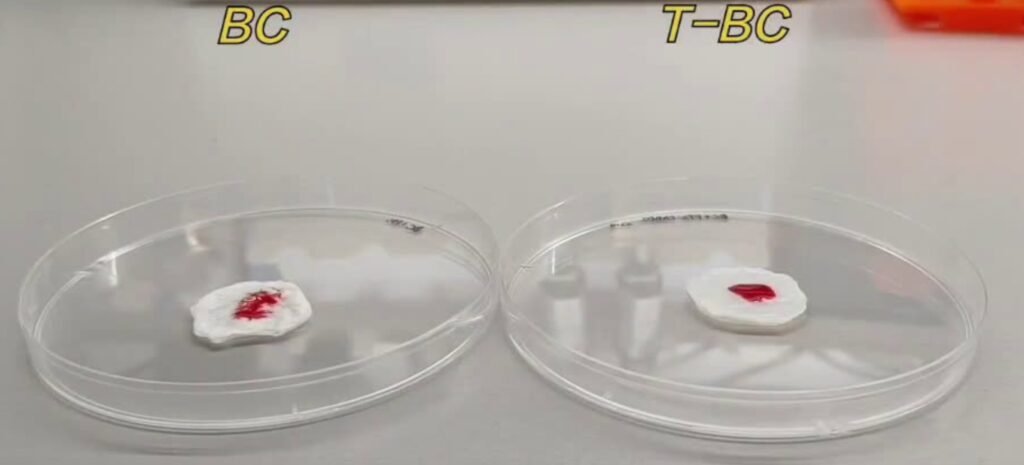The field of wound care and hemostasis has seen a groundbreaking development with the introduction of a new bacterial cellulose-based dressing. In a recent study published in Advanced Materials, a team of researchers unveiled a novel hemostatic dressing that promises rapid and sustained bleeding control, particularly in the context of burn injuries.
Burn injuries are known to be complex traumas that can result in severe damage to multiple organs, leading to high morbidity and mortality rates. One of the challenges in managing burn wounds is achieving hemostasis during debridement. While traditional methods like electrocautery have been effective in controlling bleeding, they come with risks such as thermal tissue damage and operational limitations.
Bacterial cellulose (BC) has emerged as a promising material for wound dressings due to its unique properties such as microporous structure, mechanical strength, breathability, and biocompatibility. However, BC lacks intrinsic hemostatic properties, which limits its effectiveness in certain wound scenarios. To address this limitation, the research team led by Dr. Zhong Chao and Dr. An Bolin from the Shenzhen Institute of Advanced Technology of the Chinese Academy of Sciences, along with Dr. Liu Yan from Ruijin Hospital Affiliated to Shanghai Jiao Tong University School of Medicine, developed a synthetic bioengineered solution.
By incorporating human-derived thrombin onto a BC matrix using a specialized cellulose-binding domain (CBD), the researchers created a thrombin-anchored BC (T-BC) composite dressing. This innovative dressing not only enables rapid hemostasis but also promotes wound healing. The T-BC dressing retains BC’s natural characteristics such as nanomesh structure, breathability, and biocompatibility while enhancing its hemostatic properties through protein engineering.
In vitro coagulation tests confirmed the superior hemostatic performance of the T-BC dressing. In animal models, the dressing achieved effective hemostasis within a minute, surpassing conventional materials. Moreover, in a simulated deep second-degree burn wound model, T-BC-treated wounds showed accelerated healing with 40% higher wound closure rates compared to the control group after just five days.
Genetic-level analyses revealed that the T-BC dressing accelerates wound healing through a triple synergistic mechanism: promoting neovascularization, modulating inflammatory responses, and facilitating the reconstruction of skin tissue architecture. This multi-faceted action allows for precise molecular regulation of the healing process.
The biomolecular self-assembly strategy used in the development of the T-BC dressing enables efficient thrombin immobilization without the need for harsh chemicals or extreme conditions. Comprehensive biosafety evaluations confirmed the material’s excellent biocompatibility and safety profile.
This innovative dressing holds significant promise for future applications in managing both acute traumatic injuries and chronic wounds. The study opens up new possibilities in the field of wound care, offering a solution that combines rapid hemostasis with enhanced wound healing properties.
For more information on this groundbreaking research, you can refer to the study published in Advanced Materials. This work represents a significant advancement in the field of wound care and hemostasis, with potential implications for improving patient outcomes in diverse clinical scenarios.


